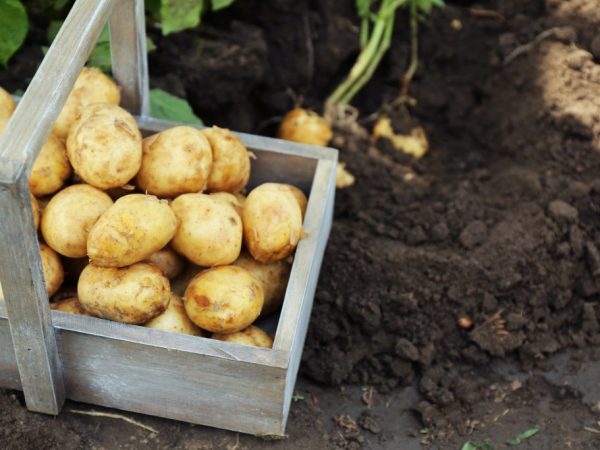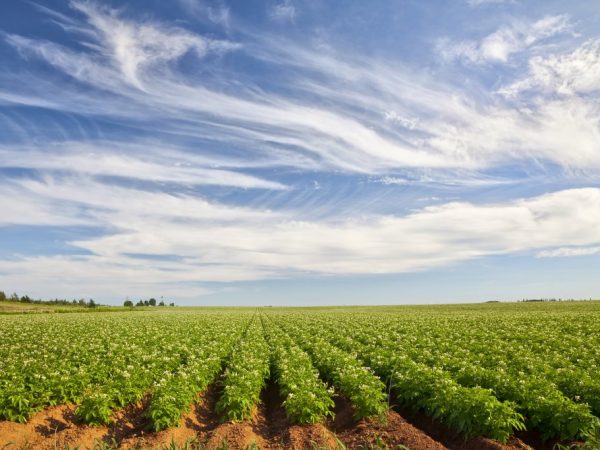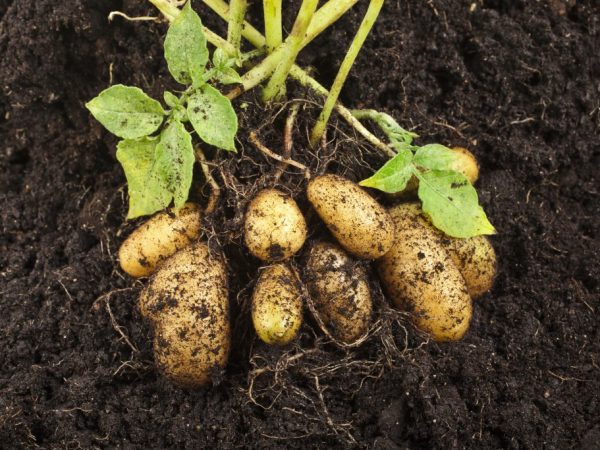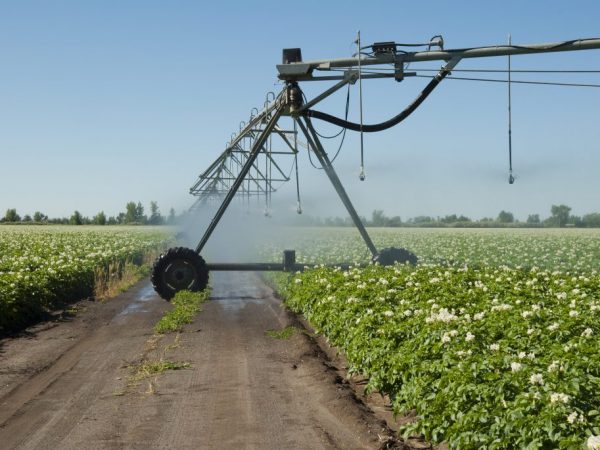Potato growing methods
Root crops occupy an honorable first place in the human diet, so domestic and foreign farmers cultivate a popular plant. However, without understanding the peculiarities of development, it is difficult to get a bountiful harvest. How is potato cultivation carried out? Let's analyze the newest and most effective methods to increase the yield of the variety.

Potato growing methods
Traditional ways
You don't have to order the original Egyptian hybrids to get the record. The technological map of cultivation and processing will tell about the important procedures that must be performed by farmers during sowing. Experienced farmers know that by following the rules of cultivation, common problems can be avoided. Conservative production methods have been around for many years, so they are simple and affordable.
Under the shovel
Growing potatoes in the "old-fashioned" way in the specialized literature is called manual technology. The sequence has been fixed for decades and rarely changes. On a previously dug backyard plot, even furrows are outlined or work is carried out along the cord. The distance between the holes should be at least 30 cm, and between the rows - 70. Narrow aisles make it difficult to care for the crop.
According to the method, one person digs a hole with a shovel, the depth of which is half a bayonet. The next farmer lays a tuber in the ground, a handful of fertilizers (humus, compost or mineral fertilizing). Root crops are buried with earth from the nearest hole. After all the seed has been used, the planting surface is leveled with a rake.
Mechanized
The cultivation of potatoes on the site can be facilitated by modern devices. If you have more than 1 hectare of land and do not want to strain your back with manual labor, then we advise you to use a special device - a planter or walk-behind tractor. A huge assortment of models allows you to choose a product for your financial capabilities.
First, deep loosening of the soil occurs. Gasoline-powered options allow one operator to manipulate, while mechanical ones require the presence of two people. Sprouted tubers are placed in furrows at intervals of 30 to 40 cm. The smaller the potatoes, the shorter the interval.
Trenches are buried with a cultivator or with a conventional rake. The distance between the rows should be at least 0.6 m. This distance allows the device to pass through the crop area without any problems, without damaging the plants when weeding, hilling or loosening.
Into the ridges
The Dutch technology of growing potatoes quickly took root among domestic farmers. The method is relevant for areas where groundwater is located nearby. Thanks to this method, the bulbs have a sufficient amount of oxygen and they do not rot.
"Clear rules of cultivation are strictly observed: selection of the best planting material, crop rotation, fertilization of the soil, treatment of tops with herbicides against pests."
A place for large potatoes is plowed with a walk-behind tractor, after which nozzles for hilling are used. A space of up to 70 cm is left between the ridges, and the tubers are planted on hills every 0.3 m, after which they are sprinkled with earth. It is necessary to ensure that the plantation does not dry out and that the beds do not crumble. As the plants develop, soil should be added on top and tied to a low trellis.
Bio-farming

We sit in rows
When growing potatoes using the seedling method, each farmer is looking for the most convenient and economical way. Our country has the best fertile lands, which makes it senseless to use sowing technologies in hydroponics and aeroponics. If you have any problem areas, you can try non-standard approaches.
Smart beds
Organic farming is now very popular, which is why many farmers prefer just such technologies. There is an interesting way of growing potatoes, which was developed by Kurdyumov. If you think over the rows correctly, then it is suitable for insufficiently fertile soils. Its peculiarity is the creation of special carpentry structures filled according to the scheme with layers of:
- soil;
- fertilizers;
- plant residues;
- drainage.
Such a "plot" is collected in long boxes, trenches or boxes, on sand or virgin soil, covered with cardboard. The filling warms the plantings and creates a natural microclimate, like in a greenhouse or under a film. If there is such a bed, then it is possible to get an intense return in any climatic conditions. The crop is not affected by potato diseases, which improves overall performance.
Double harvest
According to the Nekrasov method, in the southern regions it will be possible to collect tubers twice in one season. According to the technology, green and etched seed material is planted in the ground in winter (mid or late February) to a depth of at least 10 cm, and covered with a thick layer of mulch on top. The first early harvest is in May and the last in September.
How to grow potatoes? Propagation by cuttings of stolons in two sprouts implies cultivation in wide rows - from 60 to 90 cm.The pieces are laid out in the furrows, a handful of ash with humus must be poured over each one. For the entire period, one hilling is done.
On manure
Growing potatoes according to Mikhailov's method is classified as natural agriculture. The garden bed is marked, holes are dug at the crossroads, where the ripe manure and tubers are put, they are crushed with soil on top. After the appearance of the tops, some of the greens are left in an upright position, and the rest are laid out in the form of rays. The plant is huddled, soil is added.
During the season, a "multi-layered" strong bush grows in the pits. According to the technology, up to 19 kg of early harvest can be obtained from one copy. The method is common not only among domestic farmers, but also borrowed by Koreans and Chinese.
According to Gülich
Each plant needs a sufficient amount of nutritional area for development. The planting area is divided into squares - 1 * 1 m, a roller with manure mixed with soil and sawdust is placed in the center of each segment. Large potatoes are seated in a heap, top down, sprinkled with sandy earth on top. As soon as leaves form on the shoots, the soil is poured again. The result is a multi-tiered bush, where the main part is hidden between the layers.
Such beds do not need to be hilled, so maintenance is minimal. Development will require abundant watering and regular feeding during the season. According to the Gülikh method, in the fall, it is possible to collect more than 15 kg of root crops from each plant with high storage rates.
Vertical ways

Choosing methods of growing
The size or fertility of the plot does not always allow for farming.The technology for growing potatoes outside the open field is a novelty in Russia. Proven techniques are quickly taken up by enterprising farmers, changing to meet domestic needs.
In the tower
Cultivation of plants in stationary containers or mesh structures is not new, but has not yet been used for root crops. The method is suitable for use in a small summer cottage. Alternative farming does not require preliminary processing of the site: it is enough to pull out weeds and level the soil under the structure.
In the description of the "in the tower" method, it is indicated that it is necessary to make a not very high structure (no more than 1.5 m), the bottom of which is filled with earth and straw. Tubers are laid on top, after which the grass layer is alternated with the soil. By the way, some craftsmen grew potatoes in the same hay with the addition of the peel. As the greenery grows, the shoots are covered with a layer of soil. By the end of the season, from one structure, it is possible to get from 4 to 10 kg of root crops with good shelf life.
In bags
Potato cultivation methods in Europe and Egypt allow the use of hydroponic equipment. Our craftsmen do not pursue operational scientific technologies, therefore, at home, they fill plastic bags with a fertile mixture with sawdust, earth and humus, and make diamond-shaped holes along the surface. Such pedestals can stand not only in the garden, but also in any sunny place of the cottage.
The bag is filled one third with soil, after which the seed is planted. The soil is added as the tops grow, gradually filling the entire container. Cultivation by this method eliminates hilling and weeding. Despite all the simplicity, the method allows you to get a bountiful harvest.
By the way, growing potatoes using this technology is possible not only in bags, but also in a large pot, large bag or bucket. Carried away by vertical farming, it is possible to achieve the maximum return on conventional varieties. The minimum physical and financial costs are paid off by healthy products with an abundance of starch and normal shelf life.
In tires
Among the unconventional cultivation methods, it is worth noting the cultivation technology in tires. If you have an old car "shoe", then by burying five potatoes in such a bed, you can get at least three buckets at the exit in the fall. As the tops grow, a new layer of rubber is laid on top and the soil is filled up.
The bush stretches upward, forming additional tubers on the roots. In tires, the earth quickly warms up, therefore, with a film or agrofiber, it is sheltered from moisture evaporation. Frequent watering and regular feeding will provide the plant with nutrients.
Care

Watering machine
Whichever method you choose, you won't be able to grow your potatoes without proper attention. Both the scientific method of Alexander Stadnik and the "folk" method of Oleg Telepov makes the farmers adapt to the needs of the plant. You may not know what OKVED or EM preparations are, however, in order to harvest a rich harvest of early and middle varieties, it is necessary to create optimal conditions.
Watering
The intensity of the main irrigation depends on the condition of the soil, weather and climatic characteristics. In warm southern regions without abundant moisture, it is difficult to maximize the yield of plants. The wet seasons of the northern regions can cause root rot during the flowering stage. There are three important phases when you need water:
- after emergence;
- when the buds appear;
- after dropping the petals.
Potatoes, care and cultivation for which are minimal, will itself show the need for irrigation - the tops lose their elasticity and begin to wilt. It is important that the liquid penetrates 50 cm deep into the ground. In the greenhouse and in the open ground, at least 50 liters per 1 m2 will be needed. If there is equipment, then it is better to conduct the event by sprinkling in the morning or in the evening.
Hilling
The effectiveness of an organic or industrial process depends on many procedures. Wherever they planted and no matter how hard they made, but without loosening and removing weeds, the roots are deficient in oxygen and nutrients, therefore, the indicators deteriorate. Hilling helps to minimize care, additionally protecting the crop from both heat and frost.
As soon as the first shoots break through, it is necessary to cover the top with fluffy soil. Small hills (10-15 cm) are obtained, from which the "bouquet" grows. Reoperation is performed three weeks later. By the way, vertical methods of growing potatoes eliminate this procedure.
Top dressing
To get a bountiful harvest, it is important to fertilize correctly. It should be remembered that excess or lack of nutrients negatively affects fertility. The abundance of organic matter and mineral preparations in the second half of summer enhances the growth of tops to the detriment of tubers, and the shortage will cause small production.
The first time feeding is applied a month after planting, using nitrogen-containing substances. The second procedure is needed during the flowering period, and the third - during the formation of fruits. Three weeks before harvesting, it is necessary to stop watering with fertilizers, otherwise chemicals that are harmful to health and reduce the shelf life in storage facilities accumulate in the tubers.
If you know the requirements of the plants, then growing potatoes will not be a problem. Unusual processing and cultivation methods will allow you to get the most out of your root crop production. The recommendations contain many advanced farming secrets.


